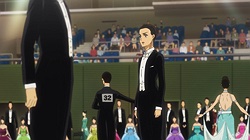 |
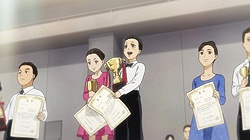 |
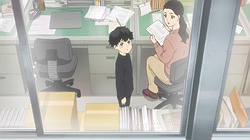 |
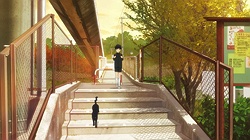 |
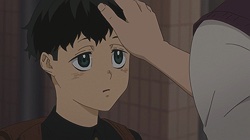 |
 |
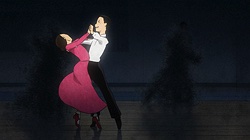 |
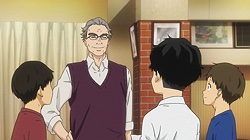 |
 |
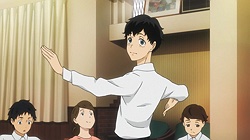 |
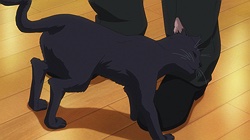 |
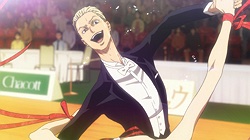 |
 |
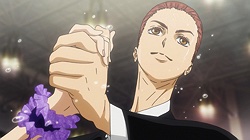 |
 |
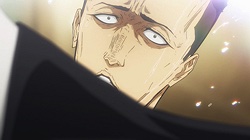 |
 |
 |
 |
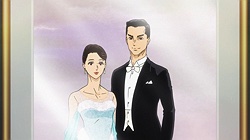 |
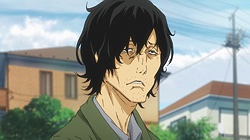 |
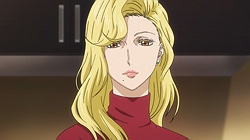 |
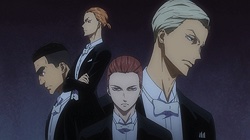 |
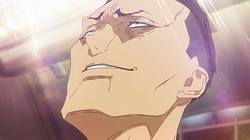 |
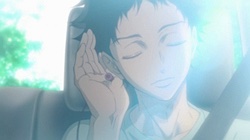 |
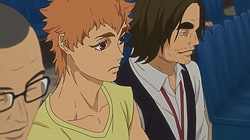 |
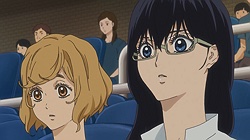 |
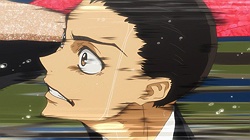 |
 |
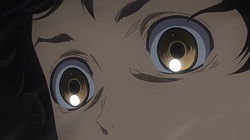 |
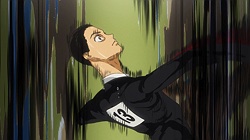 |
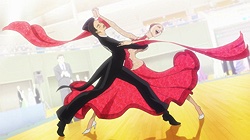 |
 |
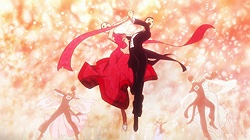 |
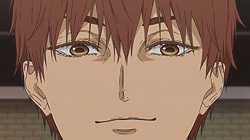 |
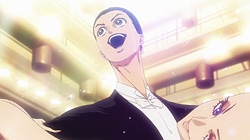 |
「リーダーパートナー」 (Leader Partner)
“Leader Partner”
I must confess this episode of Welcome to the Ballroom had me a bit worried for a while. Having just bounced off a two-week flashback sequence right at the height of the competitive drama, the last thing I wanted was another one – especially with only three eps left after this one. So when we drifted back in time to Kugimiya-san’s childhood, a part of me inwardly groaned even before I knew how that story was going to play out.
As it turned out, I needn’t have worried about that so much – Ballroom handled this flashback much more adroitly, allotting only half an episode to it rather than the bulk of two (maybe because it concerned an adult man rather than a young girl with a crush on another one, but hey – gift horses). This show has still been a bit too exposition-by-explanation heavy lately – between Kugimiya and Hyoudo’s nonstop voice-over narration, I was starting to get a bit fatigued. But at least the exposition doesn’t get in the way of the narrative progressing.
It was already clear that Kugimiya-san was a pretty dark guy, but from the moment he followed that crooked-tailed cat to old man Edachu’s dance studio and surrendered to fate. But make mo mistake, his has been a dark ride. To hate something so much as to want to die just to be released from your compulsion to continue it – that’s pretty grim stuff right there. I think there are a surprising numbers of performers (athletic and otherwise) who broadly share Kugimiya’s “Hell” trait of feeling physically ill at the idea of being watched and judged by all those strange eyes. But the more specific element of this for Kugimiya is the notion that his dance – which is really his teacher’s dance – is too old and tired to be beautiful.
Ballroom e Youkoso does love juxtaposition, and there can be no question that the Tatara-Chinatsu pair is as different as can be from the Kugimiya-Idogawa pair. We saw glimpses of that last week and all the more so this – this is old vs. new in more ways than one. Kugimiya and Idogawa dance in an adult style that accents their experience and stature, classical and poised – to which the kids can only respond with pure dynamism. Not only is their quickstep footwork not complicated like the older pair, they’re basically doing a speeded-up version of their waltz routine with a lot of crazy upper-body movement thrown in for seasoning. And for the most part, it seems to be working.
I’ve been trying hard to wrap my mind around this (to me) strange concept of competitive dance dynamics, and more specifically partnerships. In a sense, it helps me to relate it to Shouwa Genroku Rakugo Shinjuu. If one looks at the male as the performer and the female as the rakugo itself, perhaps Kugimiya is like Yakumo – a pure classicist who accents the pure form of the art. And Tatara is like Yotarou – he approaches his performance with an almost total lack of ego, which means he adapts his style to his partner the way Yotarou lets the personality of the original work supersede his own interpretation of it.
This notion of how partners interact has always been the core of the story with Ballroom, but with Tatara and Chinatsu it’s come to totally dominate thematically. As Benny Goodman’s “Sing, Sing, Sing” (these kids have good taste, liking that one) blares from the PA, something finally seems to click. As Hyoudo tells us, if the man is the guide, then the woman’s role is to be the power – and it’s Chinatsu who’s been overpowering Tatara all this time. He needs to find a way to bear up under the weight of that, to guide that raw power – because like it or not, in a dance partnership that’s his job. Whenever Tatara wants to lead Chinatsu is jama (in the way), because she’s more powerful and has a better notion of what kind of dance she wants than he does. Whether Tatara can become her ideal partner the way he did with Mako will determine whether they have a long-term future as a partnership.
Preview
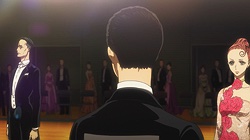 |
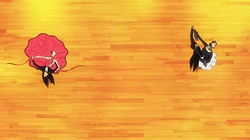 |
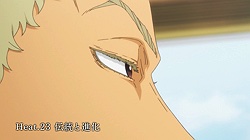 |

After watching it for the 3rd time, i came up with an Picture, what they are talking about in the subtitles
Tatara is “driving/steering” and real-wheel drive Horsepower Monster without any help of ESP and other stuff. He is driving an old 70er Power monster with much feeling on the steer
And seems like he get it under control without squeaking tires in the curves. Well the “Engine” are also try to adjust to him. So she is also playing with the gas pedal
This is my try to telling this scene using Pictures of Cars and Engine power
rear-wheel not real-wheel
my auto correction app is the culprit. Sometimes he do not take the correction over
Imagine an “old Muscle car” with big Rear Wheels and tiny front Wheels, that can do all kind of tricks, without creating squeaks and other negative stuff in a Show.. where the only break is playing with the gas pedal. No real breaks.. keep forward, keep pushing…
or in some other Picture (if you like Water):
She is the Water pressure that put Tatara’s Water on stress, nearly breaking.. So he got the spark, that “blocking” her is not right, you can not hold this Storm.. But he can bend to her water flow pressure. so he can guide her “path”
Also he saw that his floodgate was to small for her, so he open it more and control now her direction
I think this picture examples should be enough now
Tatara’s Water Dam on stress
https://randomc.net/image/Ballroom%20e%20Youkoso/Ballroom%20e%20Youkoso%20-%2022%20-%20Large%20Preview%2003.jpg
I bet he is watching an Live feed from the tournament, somewhere on the world
and what he see reminds him of his own younger days, but this time he see 2 of himself. Reminder this kind of dance is done with Two
Don’t worry mo mistakes will be made here. So basically Tatara is the power where as Chinatsu is the throttle?
Sometimes it seems they are like two streams flowing out of control, someone needs to put in a dam.
I kind of wish they hadn’t underplayed Hanaoka’s sudden realization that Chinatsu might be a dancer who will overtake her one day. In the manga, they illustrated this with a panel showing the three girls jogging during the summer camp at Hyodou’s place – with Chinatsu passing the other two girls demonstrating a better level of physical strength and fitness.
It feels like that realization might be important narratively later.
But loudly and clearly seconded on the suggestion that maybe Akira’s flashback should have been half an episode too. Amen to that.